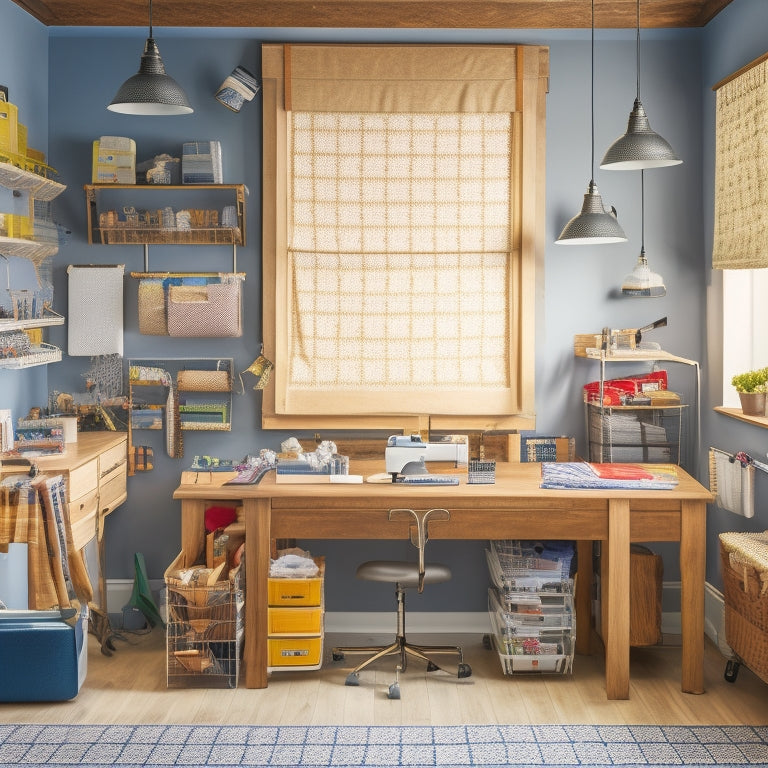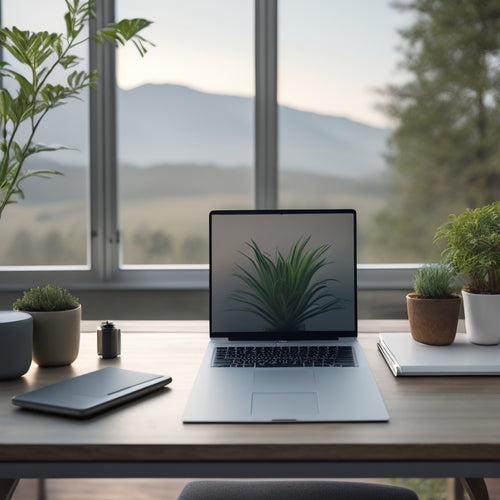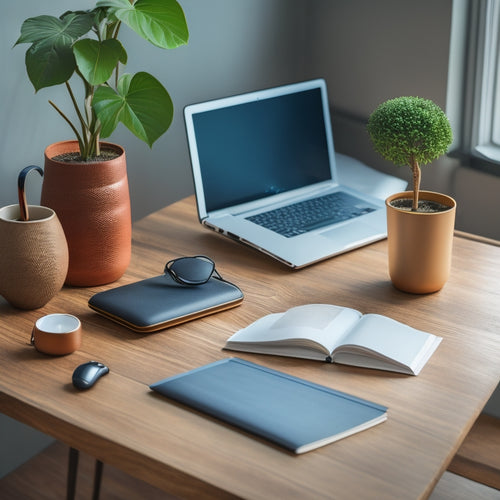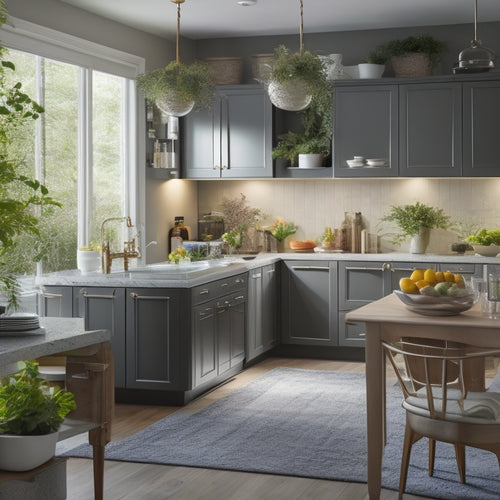
Revamp Your Sewing Space for Maximum Efficiency
Share
I've optimized my sewing space to maximize efficiency, and it's revolutionized the way I create, with studies showing that a well-organized workspace can increase productivity by up to 30%. To achieve this, I've prioritized fabric organization by utilizing shelves and designating specific areas for different fabric types. I've also arranged my sewing machines on a sturdy workbench with castors and optimized my lighting setup for reduced glare. By organizing my essential tools and allocating a specific home for each, I've streamlined my workflow, focusing on creating rather than searching for supplies. Now, I can tackle projects with confidence and precision - and I'm excited to share more strategies to help you achieve the same.
Key Takeaways
• Organize fabrics on shelves, categorizing by type, to ensure visibility and accessibility for efficient project execution.
• Design a functional sewing room layout, prioritizing storage and workflow efficiency to boost productivity.
• Position sewing machines on a sturdy workbench with castors, optimizing lighting and ambiance for a comfortable work environment.
• Assign a designated home for essential sewing tools, utilizing creative storage solutions for easy access and reduced clutter.
• Streamline your workspace by allocating specific areas for tasks, such as ironing and cutting, to minimize distractions and maximize efficiency.
Optimizing Storage and Accessibility
To maximize my sewing space, I prioritize optimizing storage and accessibility by implementing clever solutions that keep essentials within easy reach.
For fabric organization, I utilize shelves for storing fabrics, keeping them visible and accessible. This allows me to quickly find the perfect material for my projects.
I also designate specific areas for specific fabrics, such as a section for specialty fabrics and another for scraps. By doing so, I can efficiently locate what I need, saving time and reducing frustration.
This functional sewing room layout enables me to work efficiently, focusing on creating rather than searching for supplies. With optimized storage solutions, I can tackle projects with confidence and precision.
Streamlining Your Workspace Setup
I arrange my sewing machines on a sturdy workbench with castors, ensuring each one is easily accessible and freeing up valuable space for other necessities. This thoughtful furniture arrangement allows me to focus on workflow efficiency, rather than wasting time searching for the right machine. To take it to the next level, I've also optimized my lighting setup, positioning lamps to reduce glare and provide ample illumination for intricate tasks.
| Aspect | Setup |
|---|---|
| Sewing Machines | Sturdy workbench with castors |
| Lighting | Position lamps to reduce glare |
| Decor Inspiration | Add plants or art for a calming atmosphere |
Organizing Essential Sewing Tools
Five essential sewing tools - scissors, pins, tapes, seam rippers, and ironing aids - deserve a designated home to maintain a smooth workflow. To achieve this, I implement tool organization strategies that maximize my space.
I utilize creative storage solutions like small containers, baskets, and trays to keep each tool within easy reach. For instance, I store my scissors in a designated scissor holder, while my pins are kept in a small pin cushion.
I also allocate a specific drawer for my tapes, seam rippers, and ironing aids. This way, I can quickly access the tool I need, saving me time and frustration.
Frequently Asked Questions
How Do I Declutter My Sewing Space Without Getting Rid of Sentimental Items?
"I tackle sentimental clutter by creating Memory Boxes for cherished items, then practice Emotional Editing, questioning each item's significance, and finally, I curate a few select keepsakes, freeing my space from emotional weight."
Can I Use a Sewing Space for Multiple Purposes, Like a Guest Room?
I design my space to serve multiple purposes, opting for multi-functional furniture and a space-saving layout that seamlessly integrates my sewing area with a comfortable guest room, ensuring a harmonious blend of functionality and hospitality.
What Are Some Sustainable Options for Disposing of Old Sewing Supplies?
As I declutter my sewing space, I envision a greener future. I donate gently used supplies to local textile artists, repurposing storage bins for eco-friendly transport, and recycle outdated materials, reducing waste and empowering a sustainable sewing community.
How Do I Create a Sewing Space That Accommodates Different Body Types?
I design my sewing space to accommodate diverse body types by incorporating ergonomic seating options and adaptive layouts, ensuring comfortable working heights and accessible storage for all users, regardless of ability.
Can I Convert a Non-Traditional Space, Like a Garage, Into a Sewing Area?
Can I really turn a garage into a sewing haven? Yes, I can! I'll start by optimizing the space with a functional layout, then install shelves and workstations, and finally, add task lighting to create a productive garage-turned-sewing-studio.
Conclusion
As I step back into my revamped sewing space, I'm struck by the sense of calm and control that surrounds me. Every tool, every thread, every scrap of fabric has its designated place.
But the real test is yet to come - will this new space truly unleash my creative potential? Will it help me produce garments that exceed my wildest dreams?
Only time (and my next project) will tell.
Related Posts
-

Streamline Your Digital Life: Online Courses to Help
You're feeling overwhelmed by digital clutter, and it's time to take control. Online courses can help you streamline ...
-

Mastering Digital Decluttering With 5 Essential Tools
You're tired of feeling overwhelmed by your digital clutter, and it's time to take control. To master digital declutt...
-

Why Corner Cabinets Are a Kitchen Essential
You're sitting on a goldmine of untapped storage potential in your kitchen - the often-wasted corner spaces that can ...


